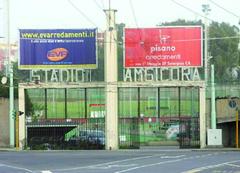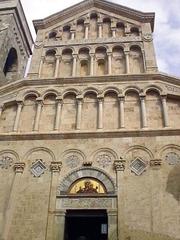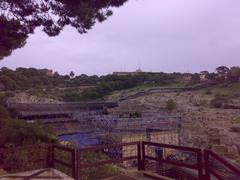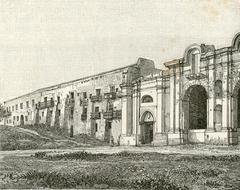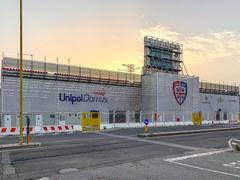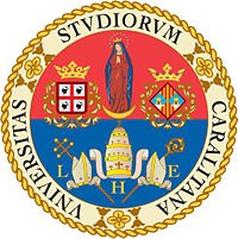Clemente Susini Wax Anatomical Models: Visiting Hours, Tickets, and Cagliari Historical Sites Guide
Date: 04/07/2025
Introduction
Nestled in the historic heart of Cagliari, Sardinia, the Clemente Susini Wax Anatomical Models stand as a testament to the remarkable intersection of art, science, and education. Created between 1803 and 1805 by the celebrated Florentine ceroplast Clemente Susini in collaboration with Sardinian anatomist Francesco Antonio Boi, these models offer a unique window into early 19th-century medical knowledge and artistic mastery. Today, this collection is housed at the Cittadella dei Musei and continues to intrigue medical professionals, historians, art lovers, and travelers alike (NCBI, Cagliari Turismo, University of Cagliari).
This guide provides comprehensive and up-to-date information on visiting hours, tickets, accessibility, guided tours, and ways to enhance your experience with nearby Cagliari historical sites. Whether you are searching for “Clemente Susini wax anatomical models visiting hours” or planning a cultural itinerary in Sardinia, you will find all the essential details here (Academia.edu).
Table of Contents
- Historical Background and Significance
- The Collection: Distinctive Features and Craftsmanship
- Location and How to Get There
- Visiting Hours and Ticket Information
- Accessibility and Visitor Services
- Guided Tours and Special Events
- Tips for an Enriching Visit
- Nearby Cagliari Historical Sites
- Frequently Asked Questions (FAQ)
- Conclusion
- Official Sources
Historical Background and Significance
Origins of Anatomical Wax Modelling in Italy
Anatomical wax modelling reached its zenith in 18th-century Italy as a response to the limitations of cadaveric dissection—mainly decomposition and specimen scarcity. Wax proved ideal for creating durable, realistic, and instructive models for medical education. Florence’s La Specola museum led this movement, but Clemente Susini elevated the art to new heights (NCBI).
Clemente Susini and the Cagliari Commission
Clemente Susini (1754–1814) was the most renowned Italian ceroplast of his era. Commissioned by Carlo Felice at the behest of Francesco Antonio Boi, Susini crafted 64 wax preparations for the University of Cagliari between 1803 and 1805. The models were based directly on Boi’s dissections, ensuring anatomical accuracy and reflecting the latest scientific knowledge. Notably, each case in the collection bears Susini’s signature and the year of completion, an exceptional mark of authenticity and pride (NCBI, Academia.edu).
Educational and Artistic Value
Intended as teaching tools, the wax models corrected previous anatomical errors such as the depiction of brain lymphatics and set new standards in both scientific accuracy and artistic expression. Susini’s training as a sculptor is evident in the models’ lifelike facial features and harmonious coloring, which continue to impress visitors and art historians. Their creation embodies the Enlightenment ideal of uniting empirical science with aesthetic beauty (Wikipedia, Cagliari Turismo, PubMed).
Preservation and Legacy
The collection has survived wars, relocations, and centuries of use thanks to dedicated conservation efforts. Since 1991, the waxes have been exhibited in the modern, climate-controlled Cittadella dei Musei, ensuring their continued accessibility and preservation (Cagliari Turismo).
The Collection: Distinctive Features and Craftsmanship
- Scope: 23 showcases containing 64 anatomical preparations.
- Materials: Colored wax, resins, tallow, pitch, and balms applied over plaster casts taken from real anatomical specimens (Sardegna Italia Guida).
- Artistic Features: Expressive faces, naturalistic coloring, and precise anatomical detail. Each showcase is signed and dated by Susini.
- Scientific Advances: Corrected previous errors (e.g., omission of lymphatics in the brain); based on contemporary dissections by Boi.
- Display: Mounted on wooden tables with glass protection and bilingual captions, facilitating both study and public appreciation (WhichMuseum).
- Location in Museum: Housed in the Pentagon Hall (Sala delle Mostre Temporanee) of the Cittadella dei Musei (University of Cagliari).
Location and How to Get There
Cittadella dei Musei
Piazza Arsenale, 1
09124 Cagliari, Italy
The museum is centrally located in Cagliari’s Castello district, a historic area easily accessible by public transportation and within walking distance of other major attractions. For precise directions, use GPS coordinates 39.22209, 9.116641 (Italia-Italy.org). Parking is limited; public transport is recommended.
Visiting Hours and Ticket Information
- Open: Tuesday to Sunday
- Hours: 9:00 AM – 7:00 PM (last entry typically 30 minutes before closing)
- Closed: Mondays and select holidays
Tickets:
- General admission: €5–€8
- Discounts: Students, seniors, and groups
- Free: Children under 6, certain categories (e.g., residents, students of the University of Cagliari)
- Note: Ticket prices and hours may vary; check the official museum page or contact staff for current details.
Contact:
Phone: +39 070 675 7624
Email: [email protected]
Advance booking is recommended for group visits or guided tours.
Accessibility and Visitor Services
- Wheelchair Access: The museum and Cittadella dei Musei complex are equipped with ramps and elevators.
- Facilities: Modern restrooms, cloakroom, café, and bookshop available on-site.
- Assistance: Visitors with special needs are encouraged to contact the museum in advance for personalized support.
Guided Tours and Special Events
- Guided Tours: Available in Italian and English by prior arrangement. Focus on historical, scientific, and artistic aspects.
- Educational Workshops: Periodically offered for schools and university groups.
- Special Exhibitions: Check the museum’s event calendar for temporary displays or collaborations.
Tips for an Enriching Visit
- Allow 1–2 hours to fully appreciate the collection and accompanying information.
- Photography is permitted without flash; confirm current policies at the entrance.
- Arrive early for a quieter experience, especially during weekends or holidays.
- Combine your visit with other museums in the Cittadella dei Musei or a walk through the Castello district.
- Non-Italian speakers: Seek out guided tours or use translation apps, as some descriptions may be in Italian.
Nearby Cagliari Historical Sites
- Museo Archeologico Nazionale: Sardinia’s premier archaeological museum, featuring Nuragic artifacts.
- Cagliari Cathedral: An architectural gem in the Castello district.
- Bastione di Saint Remy: 19th-century bastion with panoramic city and sea views.
- Roman Amphitheatre: Ancient ruins within walking distance.
For more Cagliari travel inspiration, see Holidaymaker.ai.
Frequently Asked Questions (FAQ)
Q: What are the Clemente Susini Wax Anatomical Models?
A: A unique collection of 64 wax anatomical models crafted in the early 1800s for medical education, now displayed at the Cittadella dei Musei.
Q: What are the visiting hours?
A: Tuesday to Sunday, 9:00 AM–7:00 PM; closed Mondays.
Q: How much do tickets cost?
A: Typically €5–€8 for adults, with discounts for students, seniors, and groups.
Q: Is the museum accessible?
A: Yes, with ramps, elevators, and facilities for visitors with mobility impairments.
Q: Are guided tours available?
A: Yes, by advance booking; available in multiple languages.
Q: Can I take photos?
A: Non-flash photography is generally allowed; confirm at the entrance.
Q: How do I get there?
A: The museum is centrally located and accessible by public transport, on foot, or by taxi.
Conclusion
The Clemente Susini Wax Anatomical Models are not only masterpieces of scientific and artistic achievement but also enduring symbols of Sardinia’s cultural heritage. Their preservation and presentation within the Cittadella dei Musei make them accessible to scholars, students, and travelers seeking a deeper understanding of the Enlightenment’s legacy. By planning your visit with this guide, you can fully immerse yourself in one of Italy’s most remarkable museum experiences.
For the latest updates, tickets, and special events, download the Audiala app, explore related articles, and follow the museum’s social media channels. Embark on a journey through art, science, and history in the heart of Cagliari.
Official Sources and Further Reading
- NCBI
- Academia.edu
- Cagliari Turismo
- University of Cagliari
- Sardegna Italia Guida
- Italia-Italy.org
- WhichMuseum
